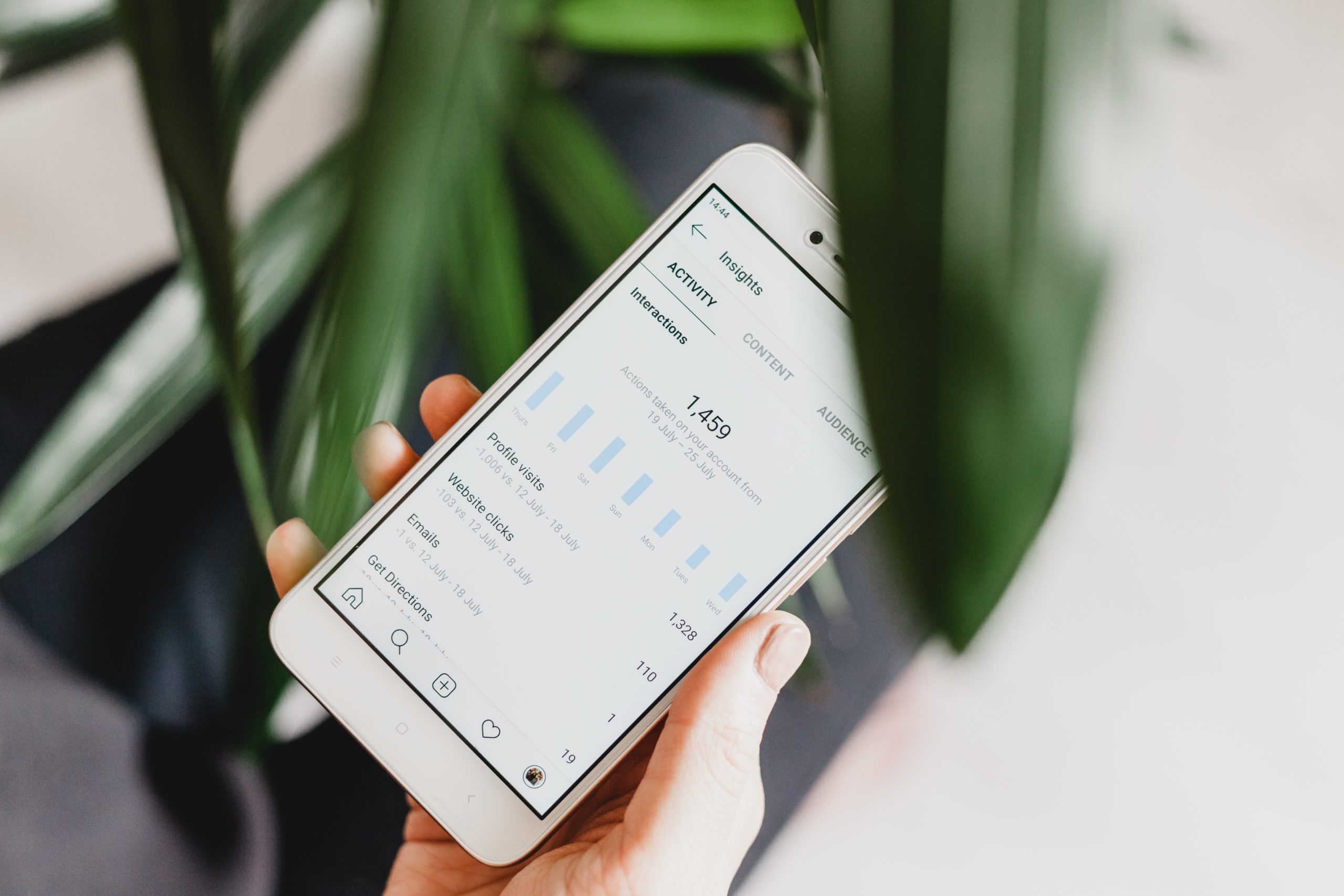Are you new to digital marketing and wondering what paid social is? In the world of paid media, paid social is the best way of increasing brand awareness, building a social following and guaranteeing reach and exposure online. But how does it all work and how do you incorporate paid social into your digital marketing mix? We’ve got everything you need to know to get to grips with the basics of paid social.
Table of Contents
What is paid social?
Paid social is a form of digital marketing whereby adverts or sponsored messages appear on social media platforms of targeted users. For example, a brand could create an Instagram ad for a new product and target it to their specific audience, right down to gender, location and age.
Paid social ads can appear on any social platform, which is perfect for reaching specific audiences. Plus, with Instagram and Facebook both being owned by Meta, the process on both platforms is nearly identical which makes things a little easier if you’re new to paid social marketing.
However, each platform focuses on a different type of content. Facebook focuses on its shopping network, Marketplace, Twitter uses short-form content, Instagram is heavily visual, and LinkedIn is the home of corporate networking. Ads should always be tailored to the platform to maximise engagement, reach and, hopefully, conversions.
How to run a paid social media campaign
Running a paid social campaign is easy – if you know what you’re doing. So, here’s everything you need to know to nail paid media advertising.
Start with an objective
As with anything, it’s important to set clear goals and objectives at the beginning so you can measure performance. To do this, it’s usually a good idea to use the good old-fashioned marketing funnel to help you identify the core reasoning for your paid social campaign.
Are you targeting customers in the awareness, consideration, conversion or nurturing stage of their buying journey? Once you’ve got a clear idea, it’s time to move on to the next step.
Understand your audience
Now you know where in the buying journey you’re targeting consumers, it’s time to learn about them in detail. You might already have a solid understanding, especially if you’re an established brand. If you’re slightly newer, start by creating some personas for your consumers. This can be profiles, motivations, likes, dislikes – anything that represents the typical consumer to your brand.
You may have multiple personas, and that’s totally okay, in fact, most brands do. Use these to guide the content you create for paid social campaigns to create consistency and maximise brand image, engagement and conversion. These personas will also help you when it comes to deciding whom you are targeting your paid social ads to later down the line.
Use the right social platforms
We know it may be tempting to jump on every social platform out there, after all, the more exposure, the better, right? Well, not necessarily. You could potentially be wasting a lot of your time, energy and resources on platforms that aren’t even relevant to your brand. For example, if you’re a beauty retailer, chances are your consumers aren’t hanging around on LinkedIn. That doesn’t mean you shouldn’t have profiles with other platforms, rather, when creating paid social campaigns, really consider where your budget is best spent.
Each platform has its own demographic and a specific type of content that performs well. We touched on it earlier, but Instagram is a heavily visual brand, its sole purpose is to share aesthetically pleasing images and has a younger user base. Facebook, on the other hand, has far more ad format options and has a larger mix of demographics in terms of age. Take the time to research each platform to form a strategy that works for you. Scope out your competitors and see what they are up to, how are they using paid social to reach the same audience as you?
Have retargeting tools set up
Retargeting is a tool and strategy used to essentially market ads to users who have previously shown an interest in your brand. For example, showing ads to a person who has previously been on your website. This is all done using little tracking codes called cookies. However, the future of cookies is a bit unclear as new privacy regulations come into action. But don’t worry, better regulated and trusted cookies are being used in their place which means you, as a brand, can still make the most of retargeting in your paid social campaigns.
How to optimise paid social campaigns
There are loads of things that can affect how successful your campaign is. From the time of the day, current events, seasonality – to name just a few. So, how can you optimise your paid social campaigns to make sure they are running at their best and giving you the best value?
Choose the right ad formats
Before you go any further, you’ll need to consider which ad format is the best for your campaign. There are several different paid social ad formats, each with a certain conversion in mind. If your product and or service is visual, consider images and video. You may even think about carousel ads for static images to make for a better user experience. Whatever you go for, make sure you’ve done your research and know which type of ad is best for your brand for maximum optimisation. Plus, it’s super important to know what metrics paid social uses to measure success, otherwise, you’ll just end up with a whole load of data and you won’t know what it all means!
Launch three or four variations of content
Let’s be honest, you may have targeted your audience by filtering them down on a granular level, but that doesn’t mean that one ad will appeal to all those people. When launching a campaign, use a variety of visuals and content to reach out to as many people as possible. It might even be as simple as changing the colour format. The algorithm of each social platform will do its thing and serve the right ad, to the right people, at the right time.
Re-evaluate budget
Paid social marketing can feel a little like gambling at first. You never know how much to put in, how much is too much and if you’ll see anything in return. There are plenty of tools out there, like BOSCO™, that can help take the guesswork out of paid social ads – so, make use of them. But as a general rule, make sure you spend smartly on the right people and at the right time. Use past campaigns to guide future ones and leave wiggle room in your budget for testing.
Why paid social media is important
There are so many reasons paid social is important, and as a paid social agency, we’re not just saying that. If you’re new to paid social or you’re just sceptical, here are just a few reasons why paid social media is important for your brand.
You’re guaranteed reach, every time
Unlike organic marketing, paid social guarantees reach every single time. Once you hit publish, the platforms do the work for you, putting your ad in front of as many people as your budget allows. While it doesn’t guarantee engagement and conversion, at the very least, it’s exposure. And with 28% of consumers discovering brands through social media, you’ve got nothing to lose.
You gain valuable insight into your consumers
Every time you run a paid social campaign and look into the results, you are learning about your consumer. What they engage with, what they like, don’t like and the best time of day to reach them. That’s invaluable data for your brand and not just from a marketing perspective either. The more campaigns you run, the more you learn, the more successful your future campaigns become. All this leads to the one thing you started paid social campaigns for in the first place, conversions.
And there you have it, a brief introduction to the basics of paid social. If you’re looking to grow your paid social activity, whether you’re starting from scratch or you’ve dabbled before, drop us an email at team@modo25.com to find out how we can work together.






